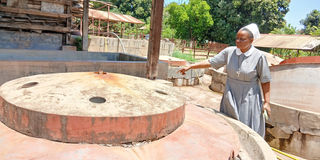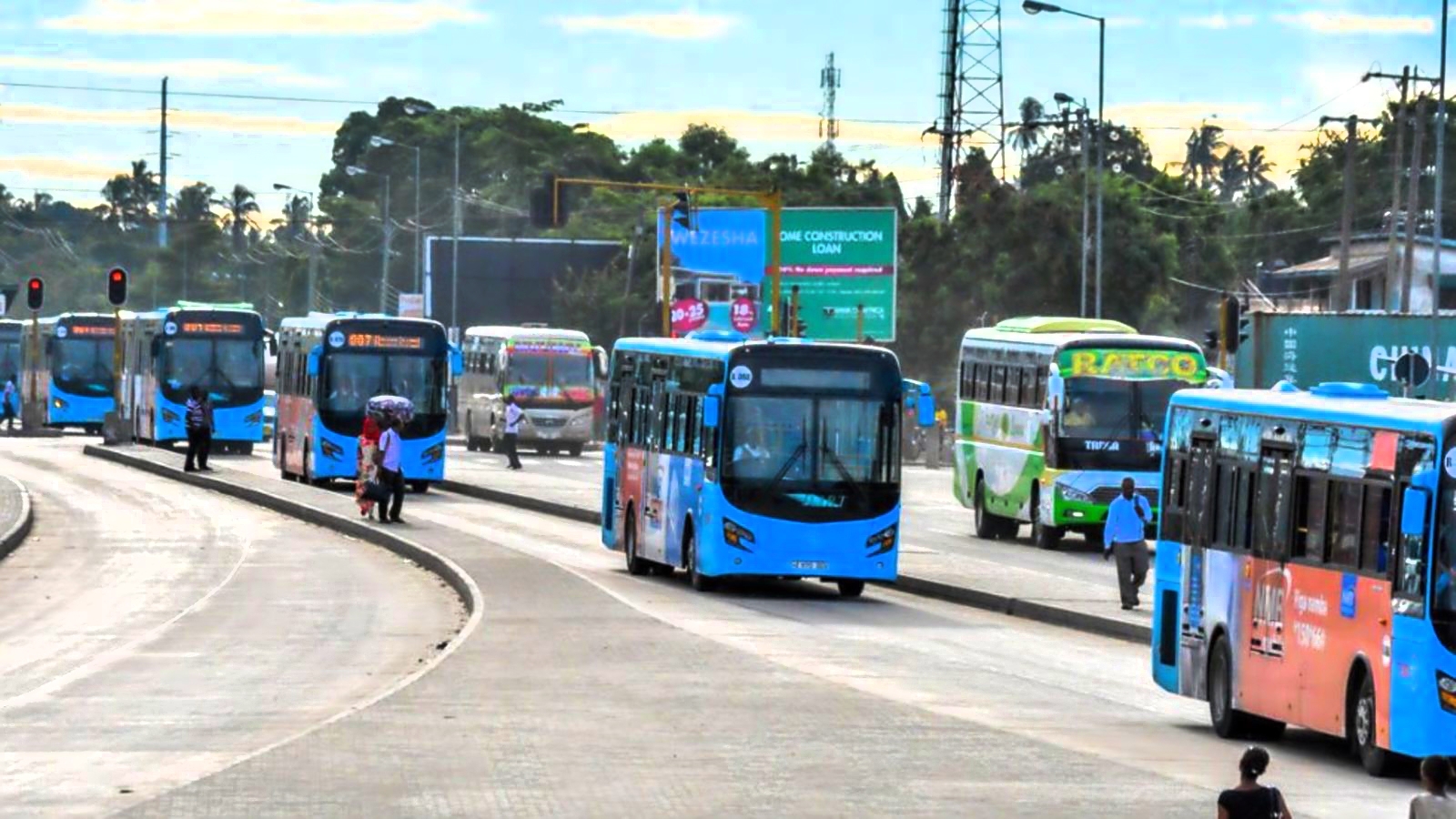How biogas is transforming lives in Kilimanjaro region

The head of the Grace Parish in Kilimanjaro Region, Sister Elistaha Mlay, shows one of the areas used to store cow dung, which is used to produce clean cooking energy from biogas. PHOTO | JANETH JOSEPH
What you need to know:
- Neema Fellowship Centre is among the institutions that have successfully eliminated the use of firewood and charcoal in the northern zone.
Kilimanjaro. As the government encourages the transition to cleaner cooking energy across the country, the Neema Fellowship Centre of the Evangelical Lutheran Church of Tanzania (ELCT) in the Kilimanjaro Region is leading the way.
Neema Fellowship Centre is among the institutions that have successfully eliminated the use of firewood and charcoal in the northern zone.
The nuns at the centre who use biogas generated from cow dung testify that they have managed to cut down cooking costs over the past 40 years, benefiting more than 150 people daily.
The centre’s Sister Elistaha Mlay told The Citizen that alternative energy has significantly reduced costs and environmental pollution.
“In 1984, we decided to use biogas after realising that we had enough livestock, especially cows who produce enough dung. We hired experts to install a biogas digester that started generating gas for domestic purposes. The gas is enough to cook food to meet the demands of over 150 people daily,” explains Sister Mlay. Before adopting biogas, the institution spent over Sh7 million annually to purchase firewood and charcoal.
“We spent an average of Sh6 million and Sh7 million a year on firewood and charcoal. With biogas, no such costs are incurred since the cow dung is free, and we have more than enough cows to produce the gas,” she said. “The greatest advantage of biogas is that after installing the system, you don’t need to buy anything. We have enough gas for years without incurring additional costs,” she added.
She stated that they have over 20 cows, adding that the biogas produced is sufficient to cook for 100 to 150 people each day. Sister Mlay emphasised that using another energy source would be far more expensive than biogas.
“The only maintenance we do is minor repairs on the system every five to ten years to ensure it lasts longer,” she added. Not only has biogas reduced their living costs, but it has also enabled the institution to protect the environment by mitigating deforestation caused by the reliance on firewood.
“Since the beginning of our fellowship here, we have embraced our roles as environmentalists. We are passionate about caring for nature and have planted numerous trees. Moreover, during the construction of the centre, we ensured that the project did not involve cutting down any trees,” emphasised Sister Mlay.
She added that given the current climate conditions, it is essential to conserve the environment to mitigate the impacts of climate change.
The centre’s success in utilising alternative cooking energy has attracted representatives from numerous institutions to visit Neema and learn about biogas, a solution that significantly simplifies daily life due to its affordability.
“We have groups coming to learn from us, and we encourage them to use alternative energy sources because firewood is becoming harder to find. Continued deforestation harms the environment because sustainable cooking would require daily tree-cutting,” said Sister Mlay.
“I’ve seen how people make charcoal, and even if you plant a new tree after cutting one down, it takes a long time to grow. That’s why when women’s and youth groups visit us, we advise them to switch to alternative energy, as it has great benefits.”
“Our biogas doesn’t pose any risks and cannot explode. Even if you forget to turn off the stove, you will be alerted by the smell of dung. Unlike other gases, biogas provides alerts, and it’s not explosive,” she noted. She added, “We’ve hired young people to manage the biogas system. We handled it ourselves initially, but we realised the need for specific people to oversee the plant. Five young workers have been recruited to take care of the biogas system.”
Regional energy plans
Speaking about Kilimanjaro Region’s strategy for clean cooking energy, the regional Clean Energy coordinator, Ms Salome Nshemetse, said that 18 institutions are now using clean energy, hinting that the target was to have 78 institutions by 2025.
“The region’s initiative aims to ensure that all public institutions with over 100 individuals adopt clean energy solutions. Several institutions have already submitted their applications, and 18 have successfully transitioned to clean energy. By June 2025, our goal is to have 78 institutions utilising clean energy,” she stated.
The Kilimanjaro acting Regional Administrative Secretary for Economics and Production, Dr Emmanuel Lema, said that the region has a positive response to clean cooking energy as the number of people adopting cleaner energy keeps increasing.
“Our regional commissioner has been advocating for clean cooking energy, and in all his meetings, he has been directing district councils to ensure awareness is raised to fulfil President Samia Suluhu Hassan’s vision for clean cooking energy,” Dr Lema noted.
He added that besides promoting clean cooking energy, officials encourage people to plant trees and stop deforestation. All seven district councils in the region plant seven million trees annually to combat climate change.
The National Clean Cooking Energy Strategy stems from the need for an inclusive national plan to address environmental degradation and the health, economic, and social impacts caused by the use of unclean cooking energy.
About biogas
Biogas is a type of energy produced from organic waste such as animal manure, decayed plants, or food scraps. This process generates methane (CH4) and carbon dioxide (CO2), which can be used as a renewable energy source for cooking, generating electricity, and powering machines.
Biogas is a crucial solution in areas seeking to reduce reliance on traditional energy sources like charcoal and firewood while also cutting environmental pollution by utilising waste from homes and industries.
Any comment on this story supported by the Bill & Melinda Gates Foundation should be shared via WhatsApp: 0765864917




